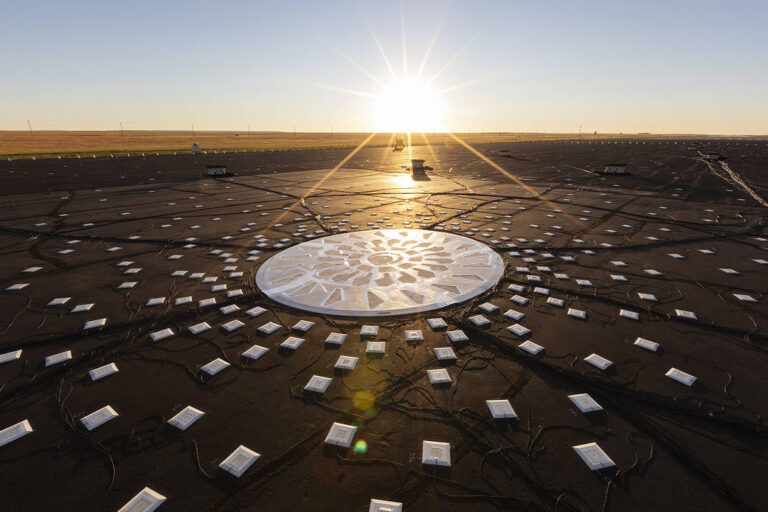研究飞机噪声
An array of 960 microphones is seen here off the end of runway 11 at Boeing’s research facility near Glasgow, Montana. The microphones were used by NASA to record the sound of a low-flying 787-10 Dreamliner passing overhead as part of the Chicago-based company’s 2020 ecoDemonstrator program during late August and early September. NASA researchers are studying how aircraft noise changes based on the interaction and placement of an airliner’s jet engines in relation to the main airframe and wing. Another 214 microphones were wired to the exterior of the 787 to aid in the studies. The data will be used to help design future airliners be quieter. Image Credit: Boeing/Text: Jim Banke 在蒙大拿州格拉斯哥附近的波音研究中心,从11号跑道的尽头可以看到由960个麦克风组成的阵列。8月底和9月初, NASA使用这些麦克风来记录低空飞行的波音787-10梦幻客机从高空经过的声音,这是总部位于芝加哥的波音公司2020年生态演示计划的一部分。NASA的研究人员正在研究飞机噪音如何根据客机喷气发动机相对于机身和机翼的相互作用和位置而变化。另外214个麦克风被连接到787的外部,以帮助研究。该数据将用于帮助设计未来的客机,使其更安静。 图片来源:波音公司/文本:吉姆·班克










